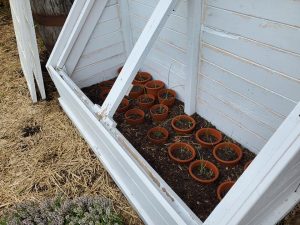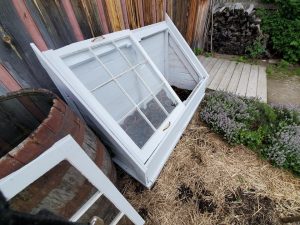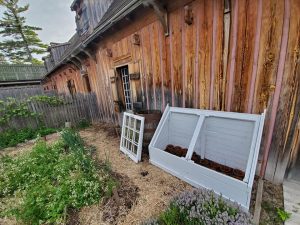



With a bit of work, a cold frame can even be used to generate heat to keep young plants warm and healthy. Historically, frames were placed over brick-lined pits full of animal manure. As the manure decomposed, it released heat, keeping the inside of the frame warm enough to support lettuces, spinach and other cold season vegetables throughout much of the winter, or at least late fall and early spring. Modern gardeners use electric heat mats to produce similar results.











